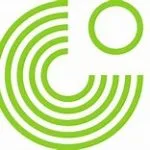Understanding the German as a Foreign Language Exam
Discovering a brand-new language opens doors to numerous opportunities, both individual and expert. Amongst the myriad of languages spoken globally, German stick out as an important language, particularly in the context of Europe. With over 90 million native speakers and thriving economies in Germany, Austria, and Switzerland, efficiency in German can supply significant advantages. For non-native speakers seeking to confirm their German language skills, the German as a Foreign Language exam works as a vital credential.
Overview of the German as a Foreign Language Exam
The German as a Foreign Language exam, commonly described as TestDaF (Test Deutsch als Fremdsprache), is an internationally acknowledged efficiency test created for non-native speakers. It assesses individuals' reading, composing, listening, and speaking capabilities in German. The evaluation is an essential stepping stone for those looking for to study or operate in German-speaking nations, as it helps in determining the candidate's ability to utilize German in scholastic, expert, and everyday contexts.
Who Can Take the Exam?
While anybody can take the TestDaF regardless of age, it is mainly targeted at:
Trainees wanting to apply for universities in Germany or other German-speaking countries.
Specialists wanting to boost their profession prospects in German-speaking areas.
Immigrants looking for citizenship or irreversible residency in Germany, Austria, or Switzerland.
Levels of Proficiency
The TestDaF assesses candidates across 4 essential elements which align with the Common European Framework of Reference for Languages (CEFR). It is segmented into the list below levels:
TDN 3: Intermediate level, ideal for most university courses.
TDN 4: Upper intermediate level, typically needed for academic programs that require strong language abilities.
TDN 5: Advanced level, expected for extremely specialized research studies or professional operate in German-speaking environments.
Exam Structure
The structure of the TestDaF includes four sub-tests, which collectively take roughly 3.5 hours to complete. Here's what candidates can expect:
Listening Comprehension (40 minutes):.
Audio recordings associated with everyday scenarios and scholastic circumstances.
Prospects answer concerns based upon the product.
Checking Out Comprehension (60 minutes):.
Texts from different fields like literature, social sciences, and lives sciences.
Concerns assess understanding of the essence and detailed info.
Written Expression (60 minutes):.
A composing task, often involving the analysis of a given topic or text.
Prospects should show clarity, coherence, and proper design.
Spoken Expression (30 minutes):.
An interactive speaking test conducted with an inspector.
Prospects are evaluated on their capability to take part in conversations, offer presentations, and react to questions.
Getting sprachzertifikat for the TestDaF.
Preparation for the TestDaF is vital, as it gives prospects the best opportunity to be successful. Here are some approaches and resources to consider:.
Research Study Various Resources.
Language Courses: Enroll in extensive German language courses tailored for TestDaF preparation.
Online Resources: Utilize platforms like Duolingo, Babbel, or Goethe Institute's online offerings.
TestDaF-specific products: Acquire practice tests from the TestDaF official website or language book shops.
Practice Regularly.
Speaking: Engage in discussion clubs or partner with language exchange partners.
Writing: Practice writing essays and letters in German, seeking feedback from native speakers or trainers.
Listening and Reading: Immerse yourself in German media by watching films, listening to podcasts, and checking out newspapers.
Mock Exams.
Taking mock tests under timed conditions can assist acquaint prospects with the test structure and enhance time management abilities. Organizations often offer practice tests to assist trainees in evaluating their preparedness.
Importance of the Exam.
The significance of the TestDaF extends beyond simple scholastic validation. Here are numerous factors why taking this exam is worthwhile:.
University Admissions: Many German universities require a particular TestDaF score for admission to programs taught in German.
Career Opportunities: Proficiency across the 4 language abilities can boost employability in international companies or organizations in German-speaking areas.
Cultural Engagement: Mastery of the language enables deeper connections with German culture, literature, and history.
Migration: Proficiency in German may be necessary for residency permits or irreversible residency applications.

Frequently asked questions.
What score do I require to pass the TestDaF?
There is no universal pass mark; it differs by institution. Usually, a score of TDN 4 is favorable for university admissions.
How typically can I take the TestDaF?
You can take the TestDaF several times. However, it is perfect to enable enough time for improvement in your language skills before reattempting the test.
The length of time are the results legitimate?
TestDaF outcomes are usually legitimate for two years. It is suggested to check the particular requirements of the institution or organization you are applying to.
Where can I take the TestDaF?
The examination is readily available at many screening centers worldwide. The official TestDaF site supplies a locator tool for discovering close-by testing centers.
Exists a specific age limit for taking the TestDaF?
There is no age limit for taking the TestDaF. Whether a teen or an adult, anyone interested in proving their German language abilities can register for the exam.
Conclusion.
The German as a Foreign Language exam is a vital element for anybody aiming to study, work, or immerse themselves in German-speaking societies. With committed preparation and the right resources, prospects can navigate the exam successfully and showcase their proficiency in the German language, unlocking various opportunities in education and career courses. Accepting the obstacle of learning German not just leads to scholastic or professional developments but also improves individual viewpoints through the understanding of a brand-new culture.
